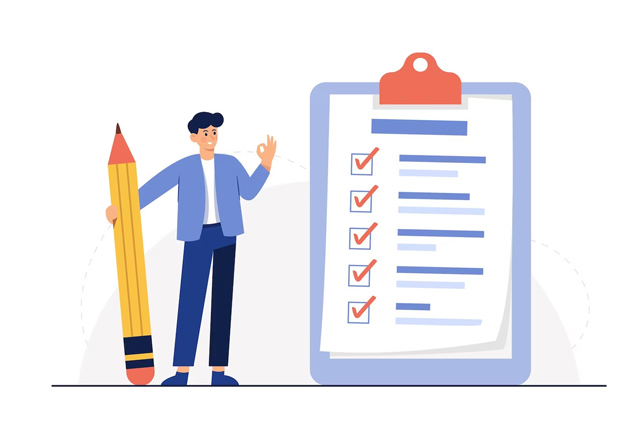Embarking on the road less traveled as a hotshot trucker opens up a world of opportunities and challenges. In this extensive guide, we’ll delve deeper on how to start a hot shot trucking business realm, offering comprehensive insights, practical tips, and a roadmap for beginners and seasoned drivers.
1- What is Hotshot Trucking?

Hotshot trucking is a dynamic niche within transportation where drivers employ pickup trucks and flatbed trailers to transport time-sensitive and critical loads. This can range from agricultural equipment to construction machinery, demanding swift delivery to a single customer.
Truck Classes by Weight
- Class 3: 10,001 – 14,000 lb.
- Class 4: 14,001 – 16,000 lb.
- Class 5: 16,001 – 19,500 lb.
With roots believed to trace back to Texas, hotshot trucking caters to industries like oil drilling and pumping operations.
2- Hotshot Trucking vs. Semi-Truck Driving: Decoding the Differences

Dive into the distinctions that set hotshot trucking apart from traditional semi-truck driving, primarily focusing on equipment and educational requirements.
Hotshot Trailer Types
- Gooseneck trailers: Known for stability and a tighter turn radius, requiring a special hitch.
- Tilt deck trailers: Utilizing a hydraulic system for easier loading and unloading.
- Bumper pull trailers: Shorter and less expensive, suitable for loads under 10,000 lb.
- Dovetail trailers: Designed for hauling cars or equipment with wheels.
- Lowboy trailers: Ideal for heavy loads with a low center of gravity.
3- Qualifications & Hotshot Trucking Requirements

Entering the world of hotshot trucking demands fewer qualifications compared to traditional semi-truck drivers. While a valid Class D license suffices for loads under 10,000 lb, a Commercial Driver’s License (CDL) becomes essential for heavier loads.
4- How to Start Hot shot Trucking Business: A Comprehensive 10-Step Guide

Launching your hotshot trucking venture requires careful planning and execution. Follow these ten steps for a seamless journey.
Step 1: Get a Driver’s License or CDL
All hotshot drivers need a valid Class D license or a CDL to operate.
Step 2: Obtain Your Medical Card
Hotshot drivers, like semi-truck drivers, must obtain a medical card from a DOT-certified medical examiner.
Step 3: Commercial Driver’s Insurance
Research and obtain commercial driver’s insurance that fits your budget. Quotes depend on your driving record and experience.
Step 4: Get Your MC Number or Operating Authority
For interstate travel, an MC number from the FMCSA is necessary. Commercial insurance is required, and there’s an application fee.
Step 5: Register Your Business with the State
Those planning to start a business of hot shot trucking should register with their state. This provides a federal tax ID (EIN).
Step 6: Purchase Equipment
Invest in a suitable pickup and trailer. A down payment for a dually or super-duty pickup truck could range from $5,000 to $25,000 or more.
Step 7: Find Loads & Start Driving
Work with a company or use load boards to find jobs and gain experience. Free and subscription-based hotshot trucking load boards are available online.
Step 8: Develop a Maintenance Plan
Given the nature of hotshot trucking, with frequent and often long-distance hauls, having a comprehensive maintenance plan is crucial. Regular inspections, scheduled oil changes, and immediate repairs ensure your equipment stays roadworthy.
Step 9: Cultivate Networking Skills
Building connections within the industry is paramount. Attend trucking events, join online forums, and connect with other drivers. Networking can open doors to new opportunities and invaluable advice.
Step 10: Stay Informed About Industry Trends
The trucking industry evolves, and staying informed about the latest trends, technologies, and regulations is vital for success. Subscribe to industry publications, attend webinars, and engage in continuous learning to stay ahead of the curve.
5- Advantages of Hotshot Trucking: A Beautiful Journey Unveiled

Hotshot trucking isn’t just a job; it’s a lifestyle. Explore the advantages that make this niche an appealing choice for those with a passion for the open road.
Advantage 1: Less Expensive Startup Costs
The equipment needed for hotshot trucking is less costly, making it a more accessible option for newcomers.
Advantage 2: Good Income
Steady work with time-sensitive freight often results in higher pay rates. Rates typically range from $1 to $2 per mile.
Advantage 3: More Home Time
Hotshot drivers enjoy more time at home since they haul locally, delivering time-sensitive freight within one state or a cluster of states.
Advantage 4: Builds Experience
Hotshot trucking helps drivers gain valuable driving experience and understand federal regulations.
Advantage 5: Versatility in Load Types
From agricultural equipment to construction materials, hotshot trucking exposes drivers to a variety of loads, contributing to a diverse skill set.
6- Disadvantages of Hotshot Trucking: Navigating Challenges on the Beautiful Path

While hotshot trucking has its perks, there are challenges that drivers must navigate. Acknowledging these challenges is key to finding success on the beautiful path of hotshot trucking.
Disadvantage 1: Frequent Maintenance
Running lots of miles wears on equipment, requiring more frequent oil changes and repairs.
Disadvantage 2: Cost of Operating Authority
Obtaining and renewing operating authority can be a hassle and an additional cost.
Disadvantage 3: Competitive Job Market
Job competition can be fierce, requiring drivers to build a reliable reputation.
Disadvantage 4: Independent Load Finding
Most hotshot drivers find and plan their own loads, requiring a higher level of independence.
Disadvantage 5: Time Management Challenges
Balancing load schedules, maintenance requirements, and personal time can be a challenge. Effective time management is crucial for success in hotshot trucking.
In Conclusion, Your Beautiful Journey Awaits
Hotshot trucking isn’t just a job; it’s a lifestyle. Whether you’re enticed by the lower startup costs, the allure of diverse loads, or the freedom of the open road, hotshot trucking provides a beautiful alternative path in the world of transportation. So, buckle up and embark on your open road adventure – the world of hotshot trucking awaits!
FAQs: Answering Your Roadside Queries
Addressing frequently asked questions provides clarity for those considering a journey into hotshot trucking.
A CDL is not mandatory for loads under 10,000 lb, but obtaining one broadens job opportunities.
Companies may assign loads, or independent drivers can use load boards, both free and subscription-based.
Startup costs vary, but a down payment for a suitable pickup and trailer could range from $15,000 to $50,000.
Absolutely, many semi-truck drivers test the waters with hotshotting before transitioning to traditional tractor-trailers.